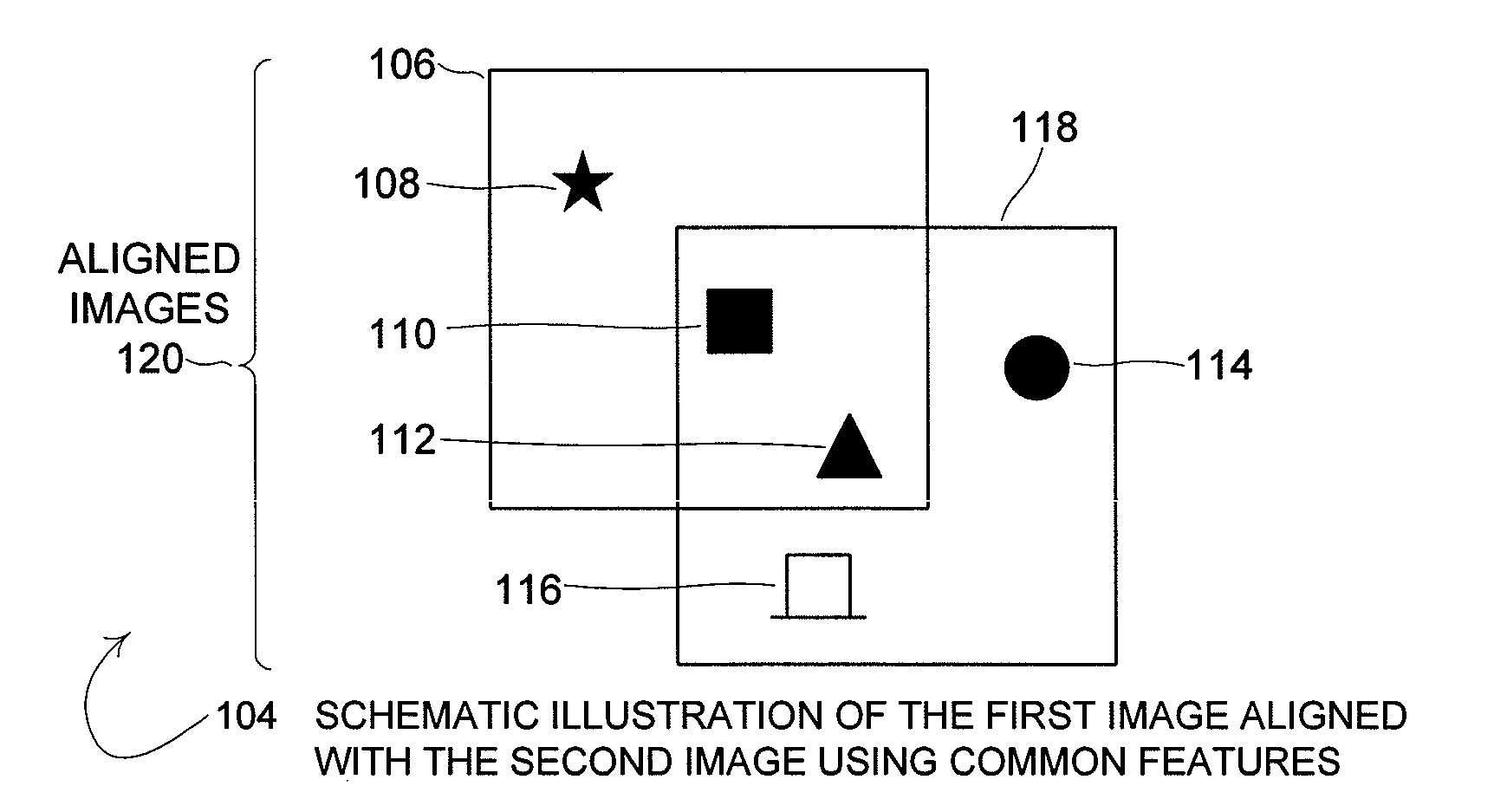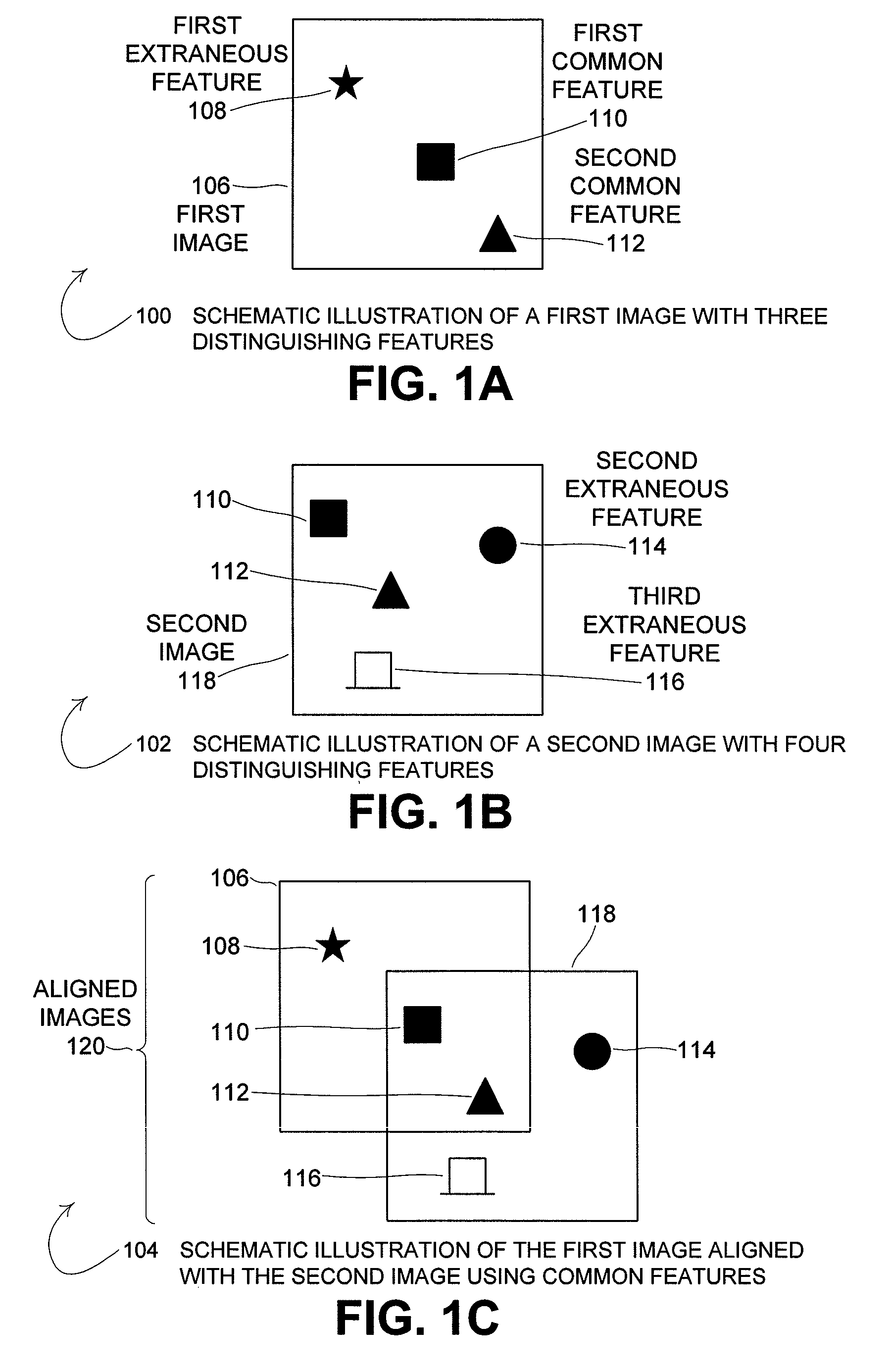Image alignment
a technology of image alignment and image, applied in the field of image alignment, can solve the problem of physical limitations of images obtained by still-frame and video cameras
- Summary
- Abstract
- Description
- Claims
- Application Information
AI Technical Summary
Problems solved by technology
Method used
Image
Examples
Embodiment Construction
[0023]Image alignment may be thought of as a form of image registration. Image registration is typically understood to be a process, or processes, for transforming different sets of data, such as two or more digital images, into one coordinate system, such as aligning and combining two or more digital images into a single image / aligned data digital image data set. Some typical image registration processes may be performed using algorithms that model the geometry / physical characteristics of the camera, location of the camera (e.g., height above the planet for aerial / satellite photography), subject matter of the images (e.g., topography of the planetary surface for aerial / satellite photography), and / or projection of the camera image on the subject matter surface by ray tracing (e.g., ray tracing projection on the planetary surface for aerial / satellite photography). Other typical image registration schemes may depend on identification of visual features of images (e.g., searching for e...
PUM
 Login to View More
Login to View More Abstract
Description
Claims
Application Information
 Login to View More
Login to View More - R&D
- Intellectual Property
- Life Sciences
- Materials
- Tech Scout
- Unparalleled Data Quality
- Higher Quality Content
- 60% Fewer Hallucinations
Browse by: Latest US Patents, China's latest patents, Technical Efficacy Thesaurus, Application Domain, Technology Topic, Popular Technical Reports.
© 2025 PatSnap. All rights reserved.Legal|Privacy policy|Modern Slavery Act Transparency Statement|Sitemap|About US| Contact US: help@patsnap.com



